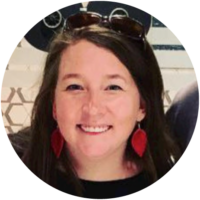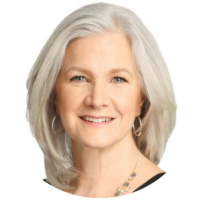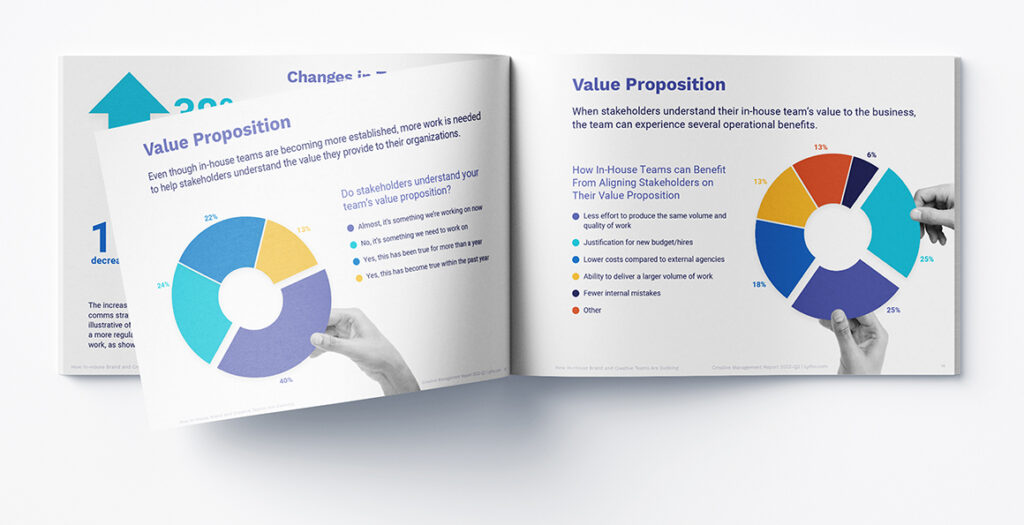
The capabilities they expect to grow the most include:
Top challenges faced by in-house brand and creative teams include:
-
Tight timelines
-
Unclear or incomplete requests
-
Unexpected changes to work that is almost complete
-
Keeping up with the volume
-
Changing priorities
2022 Q2 Creative Operations Report: Respondents’ Profile
Respondents’ Role
89% of respondents consider themselves to be part of a creative role verse 10% marketing role.
56% respondents were in a management role.

Respondents’ Team and Organization
A diverse distribution of team size, organization size, and the number of brand and creative team clients was represented in the 2022 Q2 Creative Operations Report survey answers.
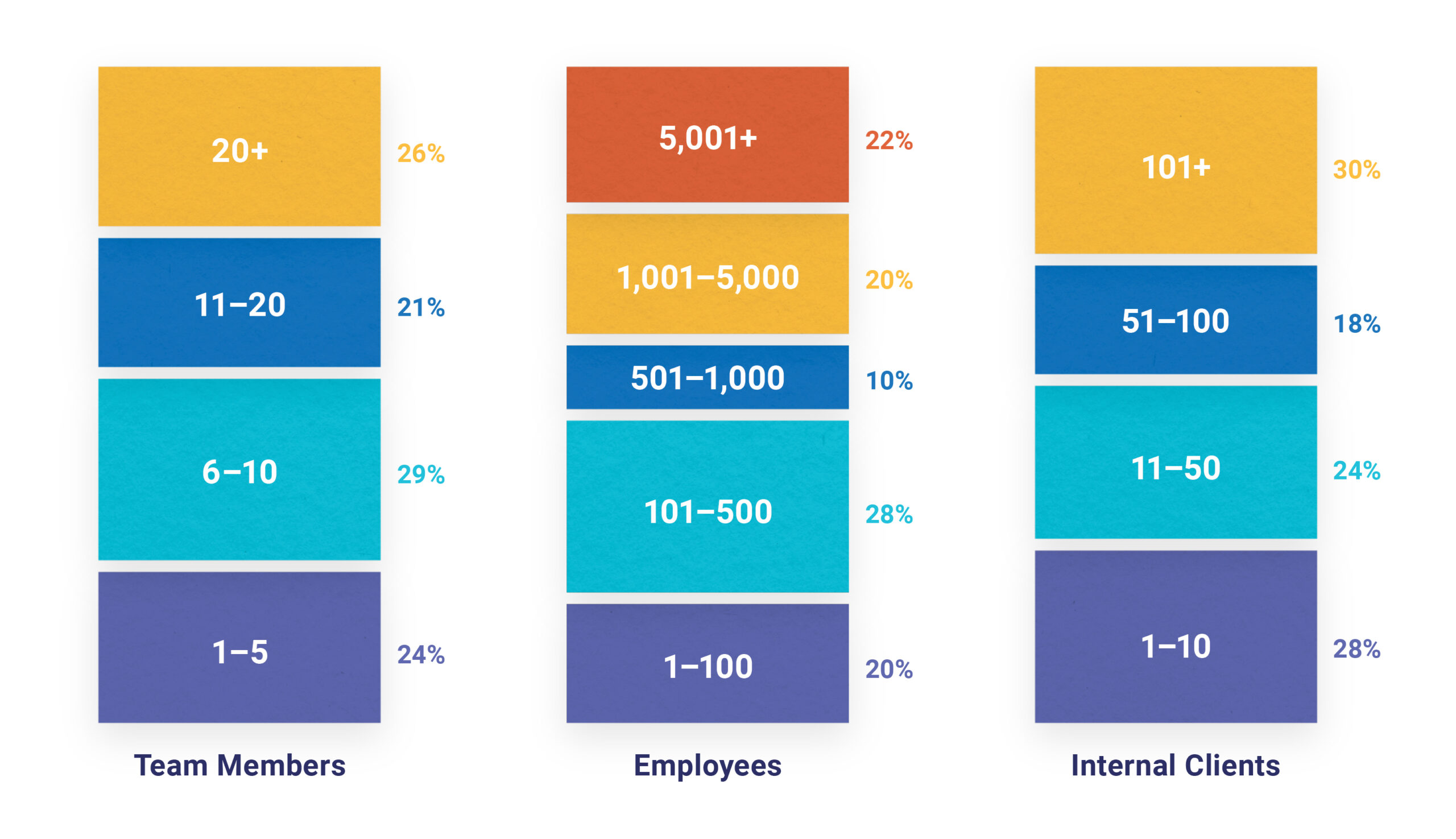
Respondents’ Industry
Respondents represented a wide range of industries.
13% Higher Education
9% CPG
8% Tech
7% Financial
8% Manufacturing
7% Government
7% Non-Profit
6% Health Care
5% Hospitality
5% Insurance
3% Retail
3% Primary Education
19% Other
2022 Q2 Creative Operations Report: The Evolution from Production Team to Content Creation Team
The pandemic pushed brand and creative teams towards drastic changes in the way they operate. They were forced to move away from traditional marketing and shift their focuses on digital channels and content creation. This shift led to restructuring, new hires, new workflows, and an emphasis on creative work online.
Due to this shift Erica declared that 2021 would be the year of content creation. The creative team began to rethink their purpose by asking themselves the hard questions – “what do we stand for as a company?”, “how do we evolve our value proposition?”, and “how do we stay true to who we are?”
Erica got to work getting the right talent on the team focused. She wanted to mix things up by bringing on some new hires on the team, relying on the existing team members to bring continuity to the work being produced but the new hires to bring a fresh perspective to the content. Within the new structure the creative team is now involved in every step of the process and is in touch with all departments, producing more accurate, on-brand, and on-strategy outcomes for the company. If you create a shared purpose, then everyone will rally behind it.
However, it is not without its challenges – the team would regularly default to the old model. But the patience and persistence paid off:
“Now, the team starts with the tactics they will follow driven by a strategic and analytical point of view, so the creative content that gets created is backed by data, not from ad hoc ideas.”
In successfully addresses your creative team’s challenges, Erica urges creative leaders to stand in their team’s shoes and figure out it is that they don’t understand. As your team what is difficult and let them know you want to help and understand what they need to be successful. Learn to speak your creative team’s language.
To read Erica’s full story, download the full reportHow Teams are Changing Their Focus, Size, Capabilities, and the Value They Provide
Team Focus
Teams are moving toward an in-house agency model where they are more regularly involved in strategic work as well as tactical work.
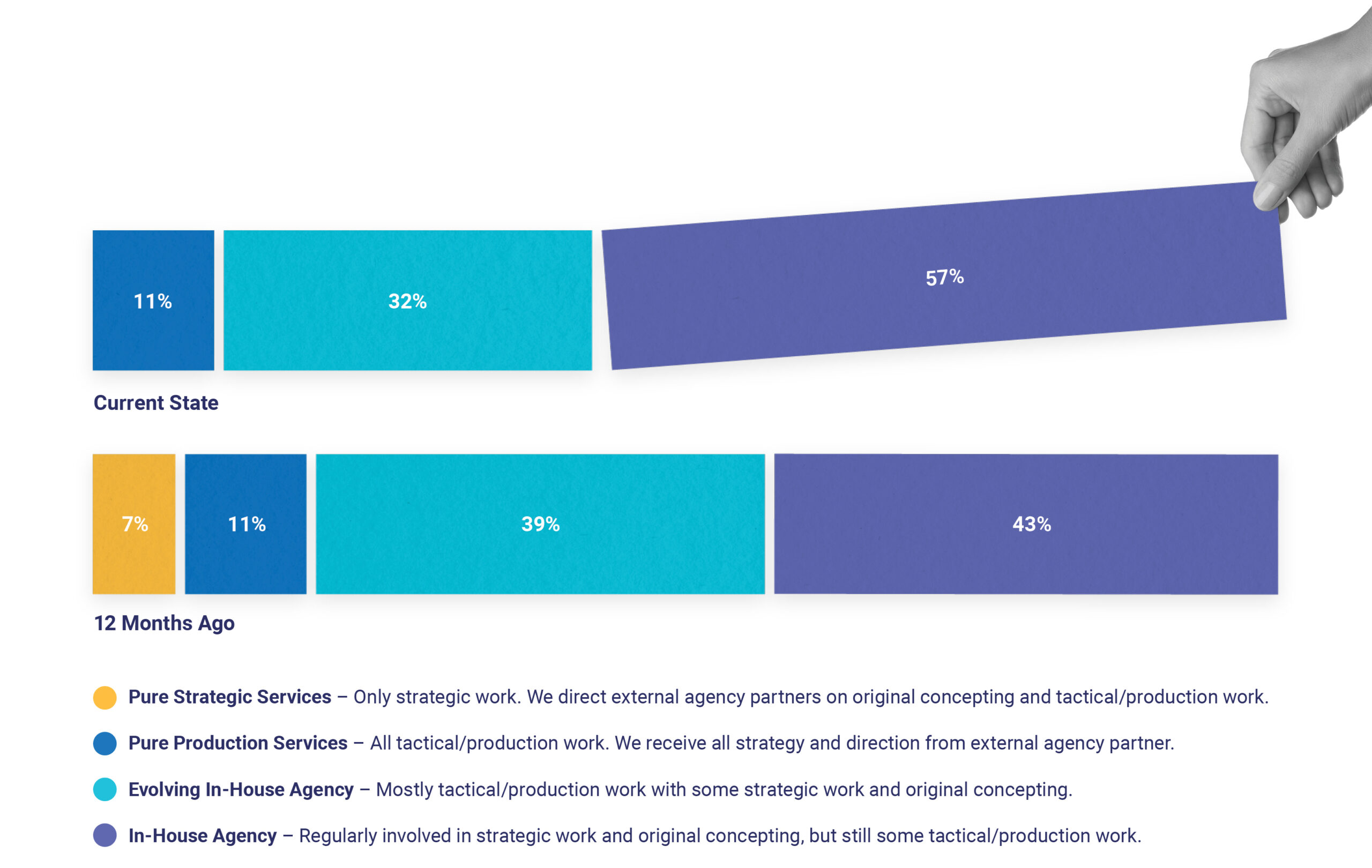
Changes in Team Size and Capabilities Over the Last 12 Months
Teams are more likely to have experienced an increase in size over the last 12 months with growth in traditional and digital capabilities.
Top Traditional Capability Growth
26% Creative Strategy
22% Marketing/Comms Strategy
19% Graphic Design
Top Digital Capability Growth
17% Digital Design
14% Social Media Design
11% Digital Strategy
The increase in creative strategy, marketing/comms strategy, and digital strategy may be illustrative of the shift teams are making toward a more regular mix of strategic as well as tactical work, as shown on the chart.
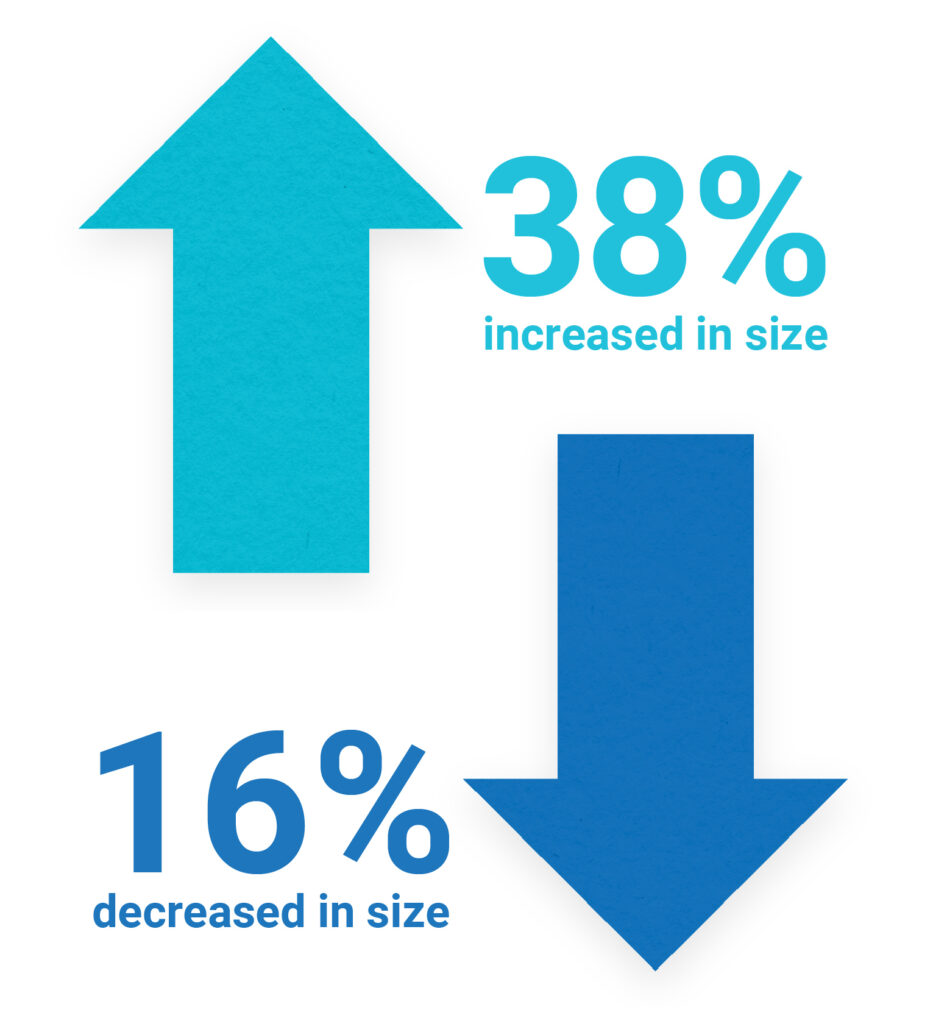
Changes in Team Size and Capabilities Over the Next 12 Months
The Q2 Creative Operations Report details how teams will continue to grow in size and capabilities.
Top Traditional Capability
Growth Expected
31% Creative Strategy
19% Marketing/Comms Strategy
16% Brand Management
Top Digital Capability
Growth Expected
15% Digital Design
12% Social Media Design
8% Web Design
Brand management is a strategic capability in how it helps companies align marketing execution with brand strategy. As teams play a greater strategic role, they will likely take more ownership over their brand and so, we would expect to see this capability continue to grow.
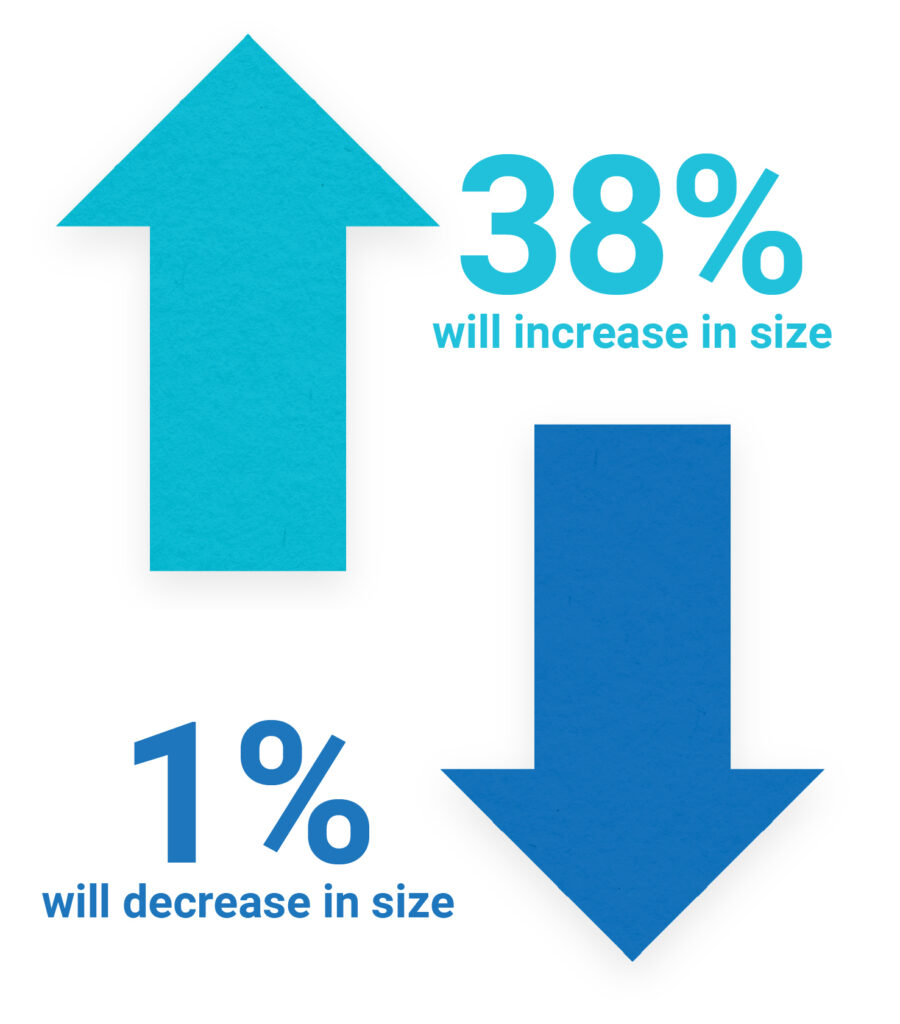
Value Proposition
Even though in-house teams are becoming more established, more work is needed to help stakeholders understand the value they provide to their organizations.
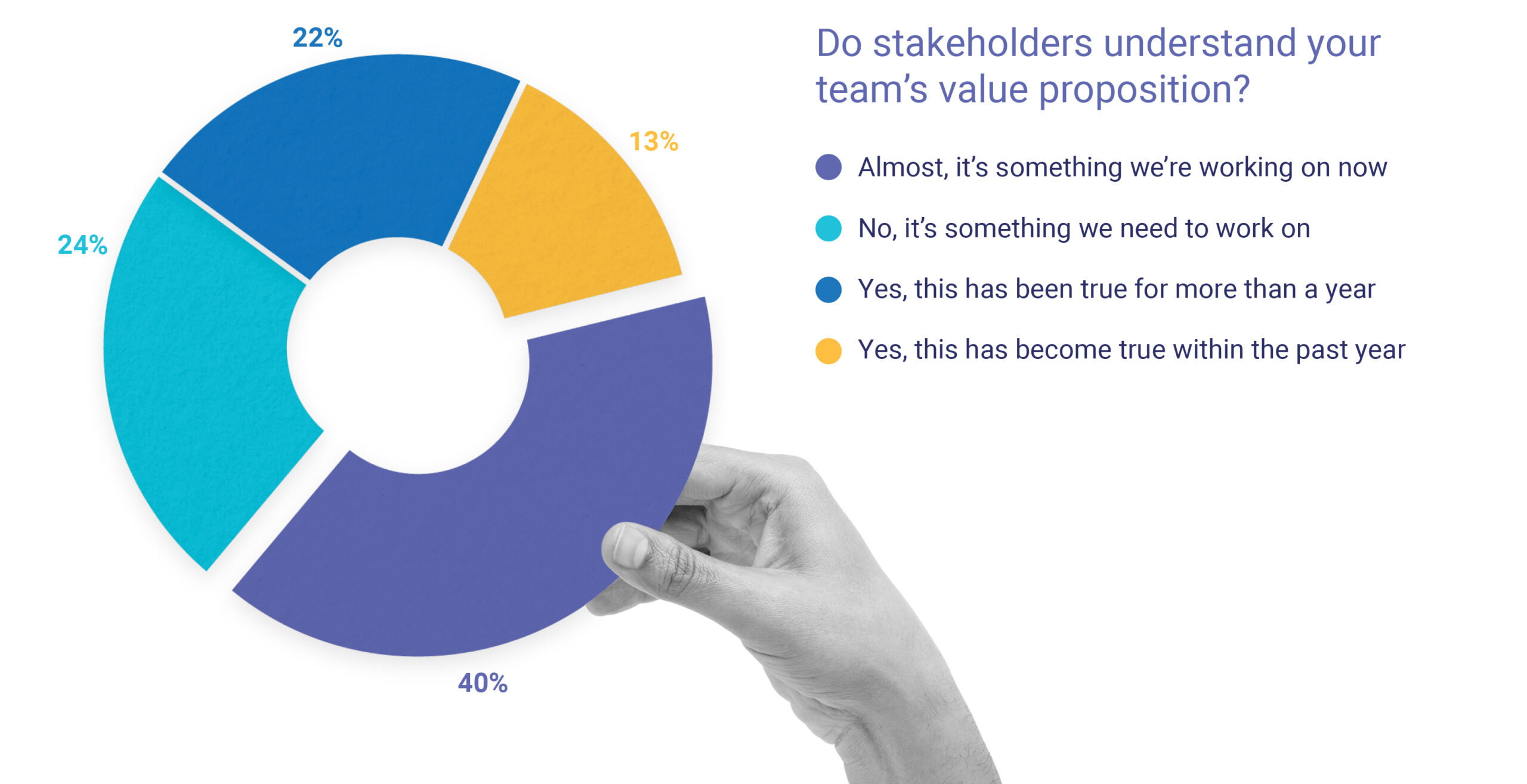
Value Proposition
When stakeholders understand their in-house team’s value to the business, the team can experience several operational benefits.
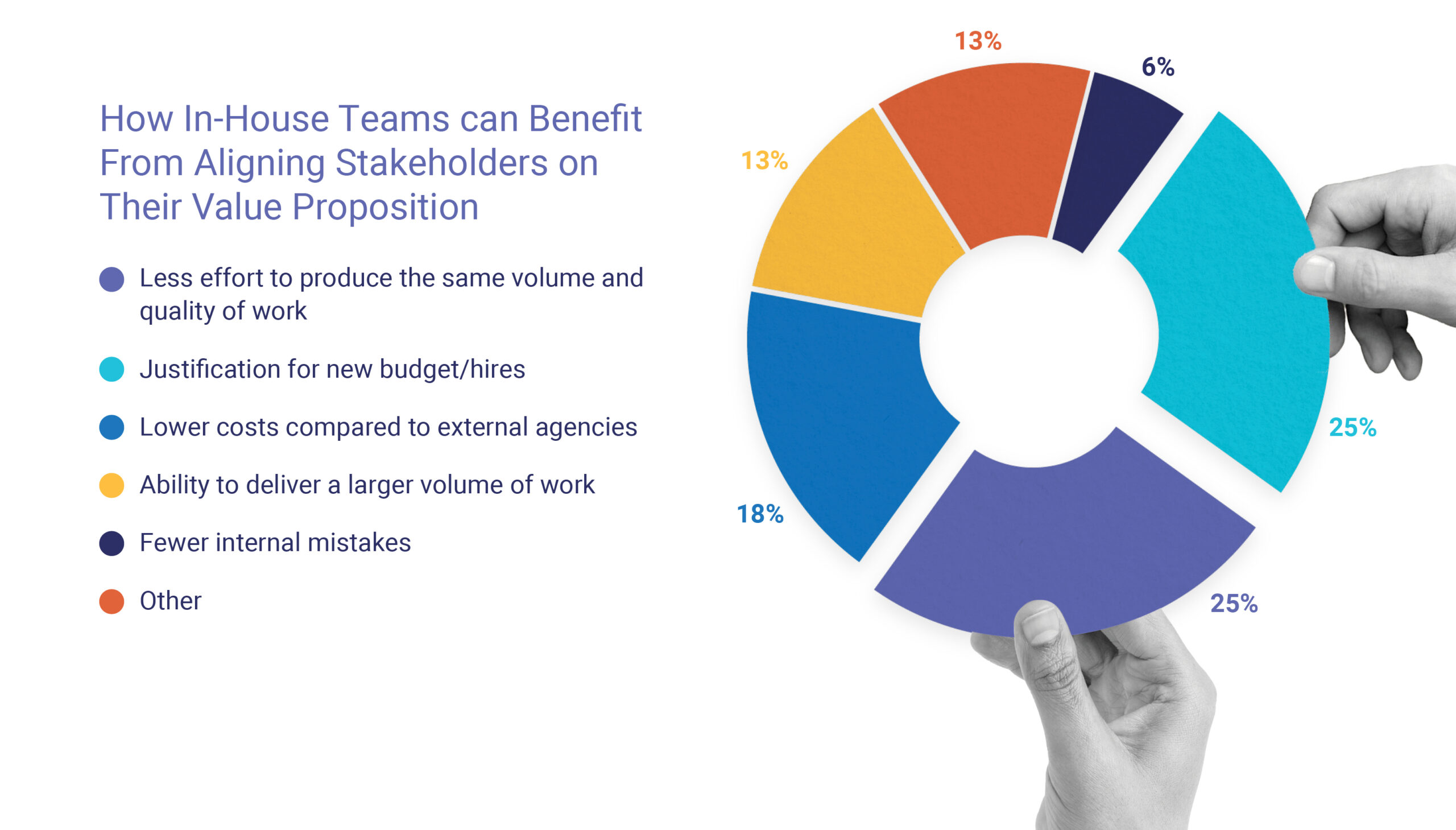
2022 Q2 Creative Operations Report: Reorganizing Blue Cross and Blue Shield of North Carolina’s Approach to Marketing – from Strategy through Execution
As the Marketing Services Manager, Katherine was given an opportunity to help reimagine the approach to Blue Cross and Blue Shield of North Carolina (Blue Cross NC) marketing strategy in order to support a recent new direction for the company. “Instead of us being oriented around the different needs of our internal business areas running the same or similar campaigns, we are now oriented around the phases of our customer journey which helps us to ensure that our messaging and our strategy is consistent for customers along those journey phases.
There is still more to work be done as Blue Cross NC is still going through the transition and aiming for better alignment. Kat’s desired outcomes by the end of the transitionary period are:
- Better Analytics
- Message Alignment
“We don’t want our teams to wait for a manager to give them permission to make a decision. We want a team that will make a decision with the information you have and then adjust if you need now.”
This comes down to the environment that her and her team have created and the reassurance she gives them. “We must have space to fail as a company and as a department. It is about fostering an environment where failure is viewed as an acceptable occurrence and that the learning process is continuous. And it helps that you and other leaders are also transparent about their efforts that recently failed and what they learned.”
And the results? The company is starting to see the benefits from these efforts. Organizing teams around the customer journey has also created better visibility for business owners and a more manageable workload for teams. The biggest challenge currently is adequately educating the business centers so they can adapt to this new way of working. “There’s a lot of comfort in the status quo, some like the experiment, some don’t like it, some have struggled.”
Pondering the future of her team, Kat emphasized she wants there to be a strong feeling of comradery and she wishes to improve the work-life balance of all teams involved in the strategy, creative and production process so they can produce better work and improve their performance metrics with efficacy and excellence. “We want our teams to work in an environment that makes them feel successful and to be able to make their own decisions and feel supported.”
To read Katherine’s full story, download the full report
Challenges and Improvements
Top Challenges
Three challenges rose above others for in-house teams aiming to satisfy stakeholder needs.
If timelines do not allow for strategic thinking and discussions, in-house teams will have difficulty providing satisfactory strategic support to stakeholders.
Unclear requests and unexpected changes to work create more work for in-house teams during already-tight timelines.
As stakeholders begin to form a better understanding of their in-house team’s value proposition, this may help alleviate these top three challenges.
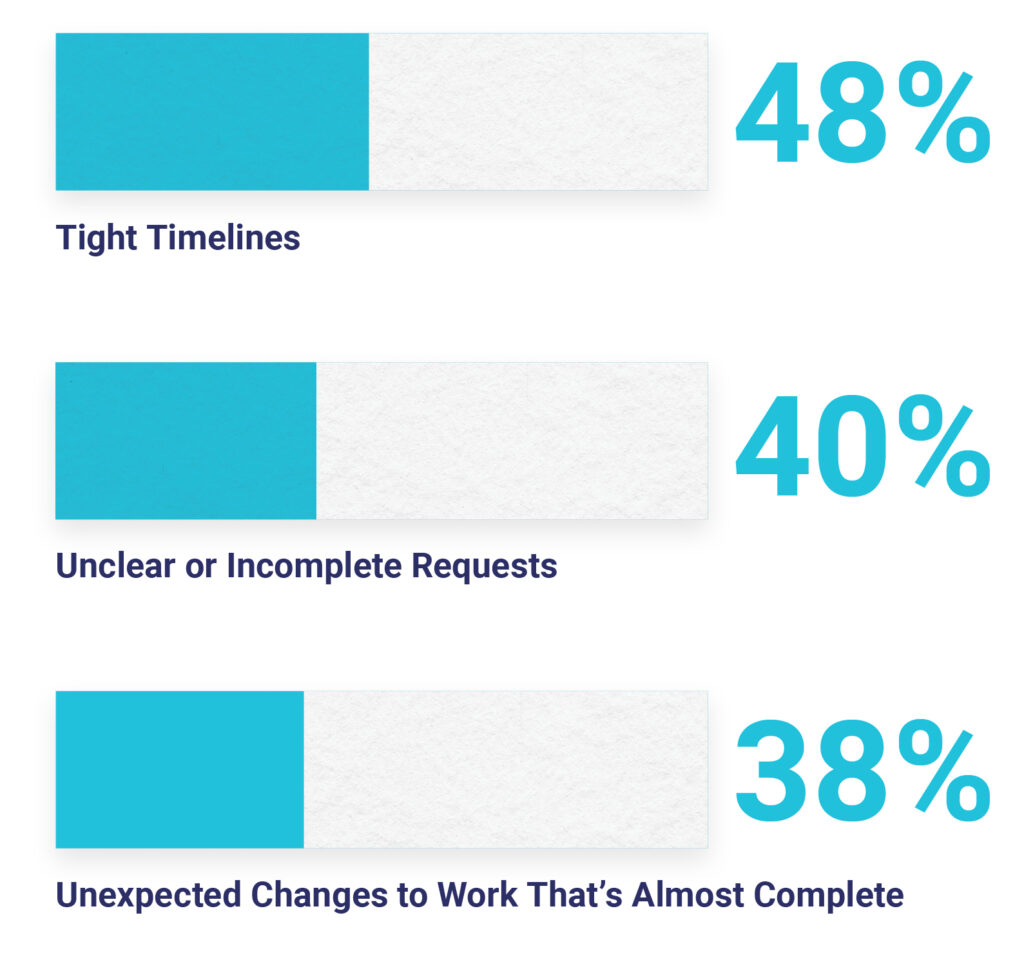
New Process Improvements
Made in the Last 12 Months
35% Improved Project Kick-Off Meetings
35% Set up Project Templates in our Workflow System
33% Defined Roles and Responsibilities
31% Documented our Process
31% Established/Improved our Creative Briefs
Over the last 12 months, in-house teams focused on internal process improvements that will support their growth, new capabilities, and scalability (Project Templates, Roles and Responsibilities, Documented Process). They also focused on stakeholder-facing improvements (Kick-offs and Creative Briefs) that will help address the top challenges on the previous page.
Planned in the Next 12 Months
27% Establish/Improve our Creative Briefs
24% Improve Project Kick-off Meetings
22% Improve Operational Reporting
21% Define Roles and Responsibilities
21% Document our Process
The following 12 months will be similar, but with stakeholder-facing improvements and reporting coming in at a higher priority than internal processes.
Process Adherence
Overall, teams are seeing lower adherence to recommended processes.
This could stem from more work needed on socializing the in-house teams’ value to their organizations.
To what degree do your stakeholders (requesters, reviewers, and approvers) consistently follow your team’s recommended processes? >>
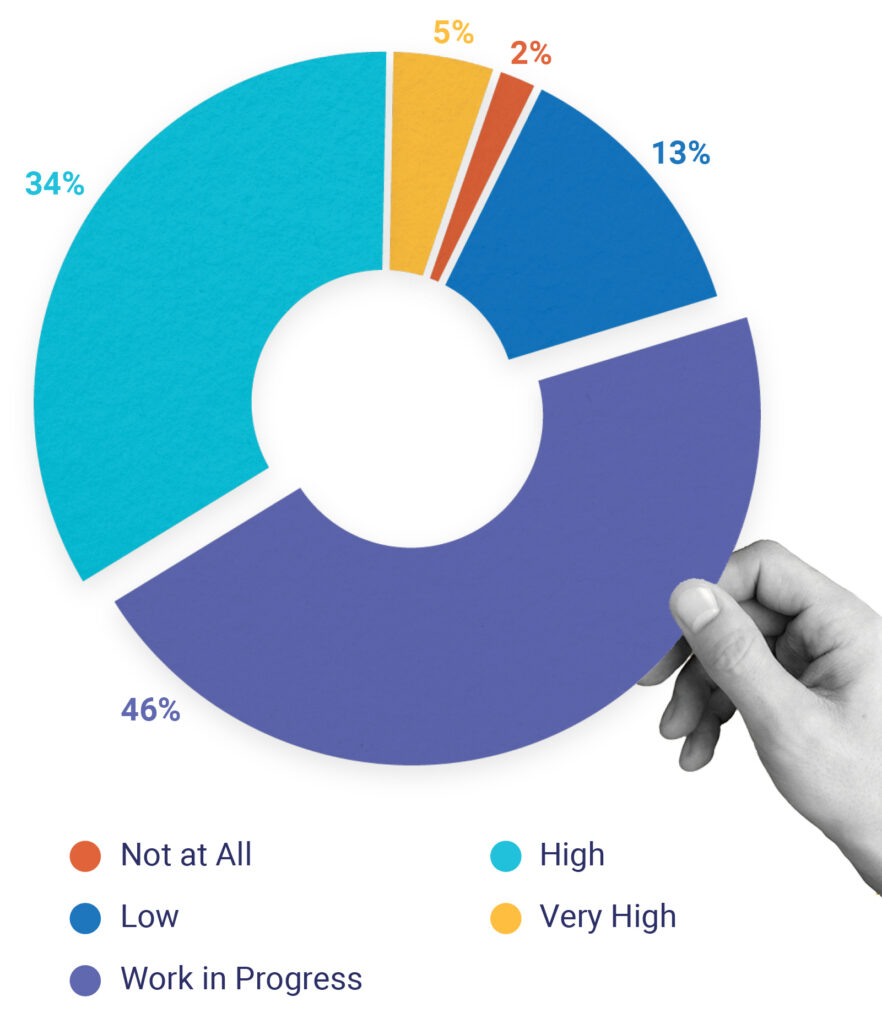
2022 Q2 Creative Operations Report: The Challenge and Successes of Transforming an In-House Brand and Creative team into Strategic Decision-Makers
The future of in-house creative teams is rapidly evolving into one where the creatives themselves are driving strategic decision-making – and Typeform is a prime example of how that’s being done, thanks to the work of Karrie Sanderson and her team.
When the company was smaller, the creative team worked in a model where designers and copywriters were embedded into different business teams throughout the organization – a matrix reporting structure – it didn’t scale and made it difficult to maintain creative control.
“So we pulled our creative into a flexible and centralized core creative studio, what we call the colony model, where individuals work on their craft but still gain expertise in different business areas.” Said Karrie.
They also leveraged external agencies to pull in when the in-house team does not have capacity or skill sets needed. Previously the company’s culture has always been to rely on the creative in-house team exclusively. However, as they grew and scaled up they needed to bring in additional resources. “This model works wonders for both sides,” exclaimed Karrie, since internal and external teams are not threatened by each other; internals build the strategy and externals build the stuff. It’s a partnership!
“We set up very clear lines of responsibility on who owns what to avoid confusion. Good ideas come from everywhere, but when it’s time to deliver we know who owns that.” Explained Karrie.
Of course there were business challenges with implementing this model. There needed to be alignment with every department and the business teams needed to break the habit of assuming creative capacity and always wanting work to happen instantly.
“Now everything goes through a single lens of brand expression, no matter what channel it’s on. Quality and process are now consistent.”
Karrie was hopeful that switching from a matrix model to a centralized colony model would work out as planned. “The devil is in the details,” she said. We needed to think about how to be flexible if an unexpected high-priority opportunity came in, so we made sure to leave space for those “cut-to-the-front-of-the-line” events. It was also important to carve out time for the creative team’s personal development. “Creatives need time to work on their craft – they cannot just be a production studio.”
To read Karrie’s full story, download the full report
Lytho helps you streamline your entire workflow and harmonize all brand collateral under a single, uniform platform. Feel free to reach out to us by scheduling a demo and learning how our creative solutions can boost the effectiveness of your creative projects. We look forward to speaking with you!
Do you want to give yourself and your creative team more room for creative stimulation by automating the boring stuff? Lytho helps you streamline your entire workflow and harmonize all brand collateral under a single, uniform platform. Feel free to reach out to us by scheduling a demo and learning how our creative solutions can boost the effectiveness of your creative projects. We look forward to speaking with you!

Ready to simplify your creative operations and start having a little fun at work again? Schedule time to talk with us.
Let us show you how Lytho’s Creative Operations Platform helps in-house creative and marketing teams do better work, ease the stakeholder experience, and stay on brand.
Schedule a Demo
